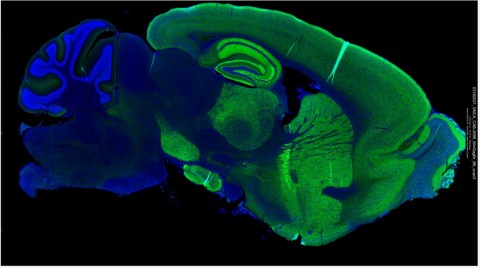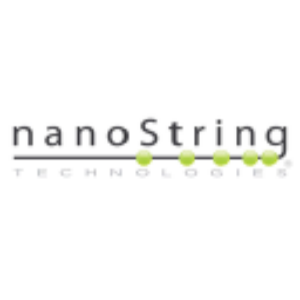NanoString's GeoMx Mouse Whole Transcriptome Atlas Expands Leadership in Spatial Genomics by Enabling Genome-Wide RNA Profiling
NanoString Technologies (NASDAQ: NSTG) has announced the launch of the Mouse Whole Transcriptome Atlas (WTA) for spatial analysis using its GeoMx Digital Spatial Profiler. This product enhances the GeoMx RNA portfolio, facilitating full transcriptome spatial RNA and high-plex protein analysis. Designed for NGS readout on Illumina sequencers, the WTA broadens applications beyond oncology and immunology to include neuroscience and developmental biology. The technology provides comprehensive insights into gene expression and pathology, supporting critical research in Alzheimer's disease.
- Launch of Mouse Whole Transcriptome Atlas enhances GeoMx RNA portfolio.
- Enables comprehensive spatial analysis in diverse fields like neuroscience.
- Strong interest demonstrated through Technology Access Program.
- None.
Insights
Analyzing...
NanoString Technologies, Inc. (NASDAQ: NSTG), a leading provider of life science tools for discovery and translational research, today announced the commercial availability of the Mouse Whole Transcriptome Atlas (WTA) for spatial analysis research using the GeoMx® Digital Spatial Profiler (DSP). This launch extends the GeoMx RNA portfolio, which combines the power of spatial biology and Next Generation Sequencing (NGS), to enable full transcriptome spatial RNA and high-plex protein analysis on the GeoMx DSP.

This sagittal section of a normal adult mouse brain, imaged on the Digital Spatial Profiler, is stained for neuronal protein alpha-synuclein (green) and DNA (blue) to illuminate intricate morphological structures for further expression profiling. Alpha-synuclein plays a crucial role in synaptic vesicle trafficking and neurotransmitter release. Accumulation and aggregation of alpha-synuclein is a hallmark of Parkinson’s disease and a therapeutic target of interest. (Graphic: Business Wire)
The GeoMx Mouse WTA provides an unbiased, spatial view of all protein-coding genes and is designed for NGS readout on Illumina sequencers. The WTA extends the GeoMx RNA Assay portfolio from a focus on oncology and immunology to new applications in neuroscience, developmental biology, and additional diverse fields. The mouse WTA utilizes the same workflow and chemistry as other GeoMx products to enable robust and sensitive performance in formalin-fixed paraffin-embedded (FFPE) or Fresh Frozen samples.
"The ability to study – with high sensitivity – regions near plaque formations in Alzheimer's disease mouse models is enabling important findings, including our recent identification of a microglial spatial signature, for example," said Dr. Michael Sasner, senior research scientist and MODEL-AD Center manager at The Jackson Laboratory. "These studies in novel mouse models should enable MODEL-AD to understand how the underlying biological mechanisms of AD may vary across brain regions with age, and to map where AD-related changes in expression start and how they spread with disease progression."
"The GeoMx Mouse WTA is a key milestone for NanoString, bringing unbiased RNA profiling for the primary animal model for discovery research, which represents about
The GeoMx Mouse WTA platform provides the opportunity to examine the relationship between pathology and gene expression within a tissue section. This technology enables measurement of all gene activity in tissue sections, across brain regions and ages, and to map where disease-related changes in expression occur.
To learn more about NanoString's GeoMx Digital Spatial Profiler, please visit https://www.nanostring.com/products/geomx-digital-spatial-profiler/geomx-dsp.
About NanoString Technologies, Inc.
NanoString Technologies is a leading provider of life science tools for discovery and translational research. The company's nCounter® Analysis System is used in life sciences research and has been cited in more than 4,300 peer-reviewed publications. The nCounter Analysis System offers a cost-effective way to easily profile the expression of hundreds of genes, proteins, miRNAs, or copy number variations, simultaneously with high sensitivity and precision, facilitating a wide variety of basic research and translational medicine applications, including biomarker discovery and validation. The company's GeoMx® Digital Spatial Profiler enables highly multiplexed spatial profiling of RNA and protein targets in a variety of sample types, including FFPE tissue sections.
For more information, please visit www.nanostring.com.
NanoString, NanoString Technologies, the NanoString logo, GeoMx, and nCounter are trademarks or registered trademarks of NanoString Technologies, Inc. in various jurisdictions.
View source version on businesswire.com: https://www.businesswire.com/news/home/20210517005115/en/







